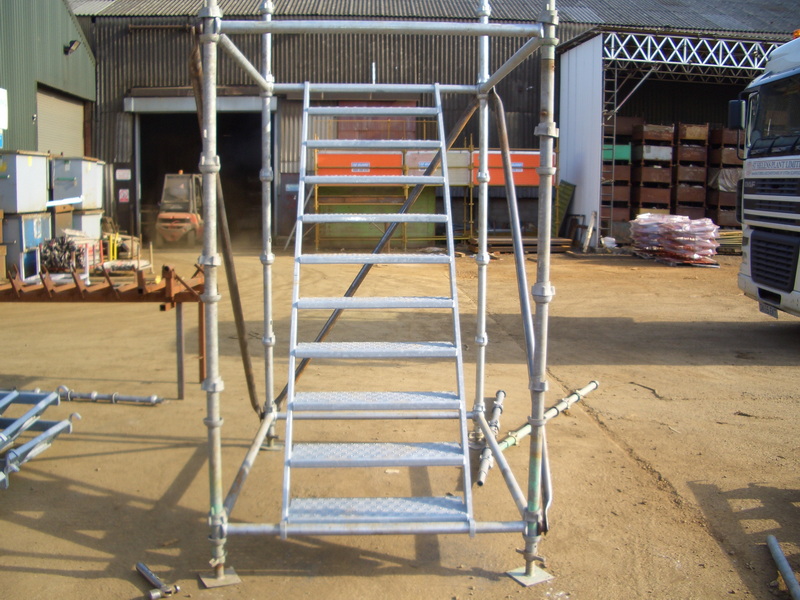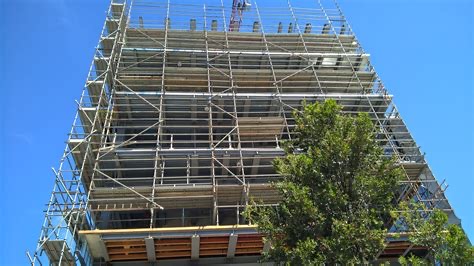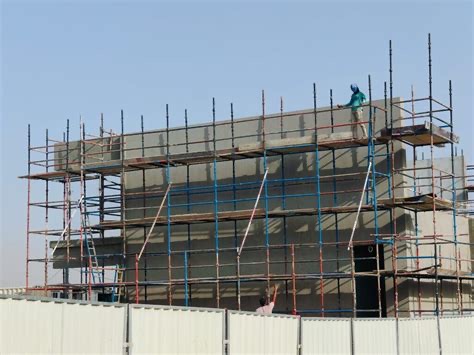Content Menu
● Introduction to Cuplock Scaffolding
● Standard Sizes of Cuplock Scaffolding Verticals in Australia
● Sizes of Horizontal Ledgers and Transoms
>> Common Ledger Lengths:
>> Transoms
● Base Jacks and Adjustable Components
● Cuplock Scaffolding Specifications in Australia
● Custom and Special Sizes
● Where to Buy Cuplock Scaffolding for Sale in Australia
● Practical Considerations When Choosing Cuplock Sizes
>> Project Requirements
>> Safety and Compliance
>> Storage and Transport
● Additional Information on Cuplock Scaffolding Sizes and Usage
>> Load Capacities and Safety Margins
>> Interchangeability of Components
>> Adaptability to Complex Structures
● Maintenance and Longevity Considerations
● Conclusion
● FAQ
>> 1. What are the standard sizes of cuplock scaffolding verticals in Australia?
>> 2. What tube diameter and thickness are typical for cuplock scaffolding?
>> 3. Are custom sizes available for cuplock scaffolding in Australia?
>> 4. What is the maximum height for cuplock scaffolding structures in Australia?
>> 5. Where can I buy certified cuplock scaffolding for sale in Australia?
Cuplock scaffolding is widely used across Australia for its versatility, safety, and ease of assembly. When searching for cuplock scaffolding for sale Australia, understanding the available sizes and specifications is crucial to selecting the right system for your construction or maintenance project. This detailed article explores the various sizes of cuplock scaffolding components available in Australia, their technical specifications, and practical applications.

Introduction to Cuplock Scaffolding
Cuplock scaffolding is a modular system consisting of vertical standards and horizontal ledgers connected through a unique locking cup mechanism. The system is designed to provide a strong, stable, and flexible scaffold structure suitable for a wide range of construction needs.
- Standards (Verticals): Vertical tubes with welded cups spaced at regular intervals.
- Ledgers (Horizontals): Horizontal tubes with blade ends that lock into the cups.
- Transoms and Accessories: Provide platform support and additional safety features.
Cuplock scaffolding is favored in Australia for its compliance with safety standards and adaptability to various project sizes.
Standard Sizes of Cuplock Scaffolding Verticals in Australia
The vertical standards are the backbone of the cuplock system. They are typically made from high-strength steel tubes with an outer diameter of 48.3 mm and wall thickness of 3.2 mm or 4.0 mm. The cups welded on the standards are spaced at 500 mm (19.7 inches) intervals to allow flexible attachment of ledgers and other components.
Common Standard Sizes:
Length (Meters) | Length (Feet-Inches) | Weight (Kg) | Description |
0.5 | 1'7" | 3.4 | Short standard for low height |
1.0 | 3'3" | 6.0 | Compact vertical standard |
1.3 | 4'3" | 8.3 | Intermediate length |
1.5 | 4'11" | 9.9 | Common size for medium height |
1.8 | 6'0" | 11.0 | Used for handrails and protection |
2.0 | 6'6" | 12.0 | Standard vertical length |
2.3 | 7'6" | 13.8 | Extended standard for taller scaffolds |
2.5 | 8'2" | 14.6 | Taller vertical standard |
2.8 | 9'2" | 16.5 | For higher scaffolding structures |
3.0 | 9'10" | 17.3 | Maximum common length |
3.5 | 11'6" | 20.0 | Custom lengths available |
These sizes are widely available in Australia through suppliers and manufacturers, allowing contractors to select the most appropriate lengths for their projects. Custom lengths can also be produced upon request.
Sizes of Horizontal Ledgers and Transoms
Horizontal ledgers connect the vertical standards and provide the framework for platforms. They typically have blade ends that fit securely into the cups on the standards.
Common Ledger Lengths:
- 0.5 m (1'7")
- 1.0 m (3'3")
- 1.2 m (4'0")
- 1.25 m (4'1")
- 1.3 m (4'3")
- 1.5 m (4'11")
- 2.0 m (6'6")
Transoms
Transoms are horizontal tubes that support working platforms and are usually sized to fit between ledgers.
- Typical lengths range from 0.6 m to 2.0 m.
- Designed to carry platform loads safely according to Australian standards.
Base Jacks and Adjustable Components
Base jacks are adjustable supports used to level scaffolding on uneven ground. They come in various sizes to accommodate different height adjustments:
Jack Height (mm) | Load Capacity (kN) | Safety Factor | Safety Bearing Load (kN) |
1100 | 173 | 3:1 | 57.67 |
600 | 135 | 3:1 | 45.00 |
500 | 116 | 3:1 | 38.67 |
300 | 137 | 3:1 | 45.67 |
These jacks ensure the scaffold is stable and compliant with safety regulations.

Cuplock Scaffolding Specifications in Australia
- Tube Diameter: 48.3 mm OD for standards and ledgers.
- Wall Thickness: 3.2 mm standard; 4.0 mm available for heavy-duty applications.
- Steel Grade: Typically S355 or S235 structural steel.
- Finish: Hot-dip galvanized for corrosion resistance; painted or powder-coated options available.
- Cup Spacing: 500 mm intervals on standards.
- Maximum Scaffold Height:
- Single (Putlog) Scaffold: 24 m
- Double Scaffold: 50 m
- Cantilever Scaffold: 20 m
- Full Framing Scaffold: 30 m
Custom and Special Sizes
While standard sizes cover most project needs, Australian suppliers often offer custom lengths and special components:
- Intermediate lengths: 1.3 m, 1.8 m, 2.3 m for specific safety or design requirements.
- Special handrail standards: Taller standards designed for edge protection.
- Custom finishes: For marine or industrial environments requiring enhanced corrosion resistance.
Where to Buy Cuplock Scaffolding for Sale in Australia
Australia has several reputable suppliers offering a wide range of cuplock scaffolding components:
- Local manufacturers: Providing custom sizes and fast delivery.
- Importers: Offering competitive prices on standard components.
- Rental companies: Selling used or surplus cuplock scaffolding at discounted prices.
When searching for cuplock scaffolding for sale Australia, consider suppliers that provide certification, quality assurance, and after-sales support.
Practical Considerations When Choosing Cuplock Sizes
Project Requirements
- Assess the height and width of the scaffold needed.
- Choose standards and ledgers that minimize waste and optimize assembly time.
Safety and Compliance
- Ensure all components meet Australian standards such as AS/NZS 1576.
- Use appropriate base jacks and braces for stability.
Storage and Transport
- Consider standard sizes that fit transport vehicles to reduce shipping costs.
- Modular sizes facilitate easier storage and handling.
Additional Information on Cuplock Scaffolding Sizes and Usage
Load Capacities and Safety Margins
Each cuplock scaffolding component is designed to withstand specific load capacities, which vary based on size and material thickness. For example, standards with thicker walls (4.0 mm) can support higher loads and are preferred for heavy-duty scaffolding or high-rise construction.
Interchangeability of Components
One of the advantages of cuplock scaffolding systems is the interchangeability of components. Standard sizes are designed to fit seamlessly with ledgers, transoms, and accessories, allowing for flexible scaffold configurations.
Adaptability to Complex Structures
Cuplock scaffolding's modular design and standardized sizes enable it to adapt to complex architectural structures, including curved facades and irregular shapes, by combining different lengths of standards and ledgers.
Maintenance and Longevity Considerations
Selecting the appropriate sizes also impacts the maintenance and lifespan of your scaffolding system. Properly sized and installed components reduce wear and tear, minimize the risk of damage during use, and extend service life.
- Galvanized finishes protect against corrosion, especially important in coastal or industrial environments.
- Regular inspections ensure that components maintain their structural integrity over time.
Conclusion
Understanding the available sizes of cuplock scaffolding components in Australia is essential for selecting the right system for your project. Standard verticals range from 0.5 m to 3.5 m, with horizontal ledgers and transoms available in various lengths to suit different configurations. Base jacks and accessories complement the system to ensure safety and stability.
When looking for cuplock scaffolding for sale Australia, prioritize suppliers offering certified, high-quality components that comply with Australian standards. Custom sizes and finishes are also available to meet specialized project needs.
By choosing the correct sizes and quality components, you can ensure efficient assembly, safe operation, and cost-effective scaffolding solutions.

FAQ
1. What are the standard sizes of cuplock scaffolding verticals in Australia?
Standard verticals range from 0.5 m (1'7") to 3.5 m (11'6"), with cups spaced every 500 mm.
2. What tube diameter and thickness are typical for cuplock scaffolding?
The standard tube diameter is 48.3 mm OD, with wall thickness usually 3.2 mm or 4.0 mm for heavy-duty use.
3. Are custom sizes available for cuplock scaffolding in Australia?
Yes, many suppliers offer custom lengths and special components to meet specific project requirements.
4. What is the maximum height for cuplock scaffolding structures in Australia?
Single scaffolds can reach up to 24 m, double scaffolds up to 50 m, with cantilever and full framing scaffolds having different limits.
5. Where can I buy certified cuplock scaffolding for sale in Australia?
Certified cuplock scaffolding is available from local manufacturers, importers, and rental companies across Australia.






















